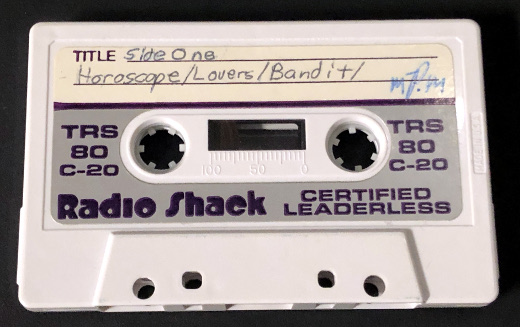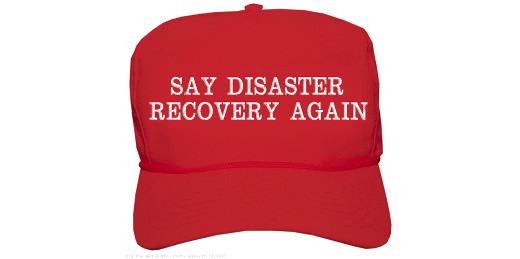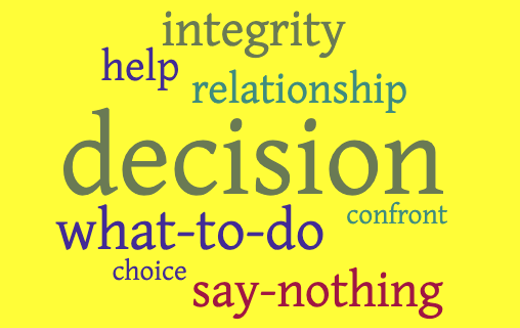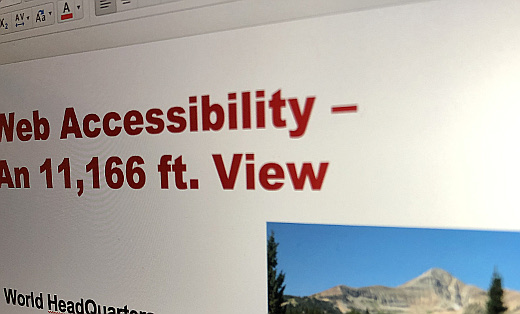Learning To Code In the Early 1980s

With all of the focus and attention these days on teaching kids about STEM (science, technology, engineering and math), it has triggered me in a positive way to recall when I myself learned how to write computer code back in the early 1980’s.
Now before you rush to judgement and say there is no comparison of the world today in 2020 to nearly 40 years ago, I’ll somewhat agree. The technology itself today is vastly different now than from then, however there are similarities in how I got started with computers and how my interest progressed.
Where It Began
This flashback is truly a journey, back in time and over many miles from where I am now. My junior high school in Massachusetts was the scene. One day in my math class, instead of getting to use basic-function calculators that were locked in a wooden case, 3 carts were wheeled in to the classroom with a Commodore PET computer on each of them. Little did I know how this would be the catalyst of my passion for technology.
Be aware the mobile smartphone you may be reading this post on has orders of magnitudes more power, memory and storage that all 3 of those PET computers combined. Let alone the fact the screens were monochrome (aka black and white) as compared to the rich colors in the palm of your hand. That being said, those computers with their cassette tape drives (we had no floppy disk drives then) had much more power than the calculators we usually got to use and we didn’t even realize the powerful tool that was put in front of us.
Tool, or should I say toy? All we usually did in math class with the computers was play games. Sure, the intent of these computers in the classroom was to expose us to the early-stages of the concept of personal computers, from typing commands to loading software from the cassette tape drive and running said software. Despite these “skills” we were learning, it wasn’t enough for me. I didn’t want to just play games as my classmates were content with, I wanted to write games!
Geek Quest
If I only had a picture of the face my teacher made when I asked her how to write software to program the PET computer. After her initial shock, she admitted she didn’t know, but there was another math teacher, Mr. Palmer, who she thought could help me. I didn’t have him for a teacher before and didn’t know him at all, and back then it was unusual to get such guidance or training from another teacher. But I wanted to learn how to write code, so I was connected with him by my teacher.
This unassuming introduction was a pivotal point in my life. And in middle school no less! Mr. Palmer proceeded to tell me the games and programs I was using on the PET were written in the BASIC programming language. He lent me a book on learning BASIC that he had, gave me some pointers and suggested I start reading this, and he would help me with any questions I had. He also said there were other books on BASIC and that other computers ran programs written in BASIC too, so I could look into those as well. Armed with this knowledge and direction, I was off and was writing my first BASIC programs by literally writing them with a pencil and paper. I did this at home or in study halls, and then when I got time in front of the computer, I would type them into the computer and save them to a cassette. The photo above in this post is of one of the cassettes I recently rediscovered from those days.
This geek quest was a solo one, however, as I was the only kid in class who wanted to write code. When it came time to use the computers in math class, of the 3 computers I would always get one to myself. Some kids complained, but overall they didn’t seem to care as long as they got a chance to play games in class.
What’s Your Sign?
My first programs were short ones that didn’t do a whole lot – clear the screen, scroll text, basic math – and I wanted to do more. The idea came from somewhere (sorry, I don’t recall all of the details of this time!) to write a program that would tell your horoscope. So I came up with a simple premise, you type in your astrological sign, spelling it exactly (even Sagittarius), and a preset silly horoscope for you would be displayed on the screen. If you know anything about programming languages, it was a giant If-Then-Else statement. But it was my If-Then-Else statement.
After some toil and testing, the program was done. I showed it to Mr. Palmer and he liked it, so I then let my math classmates give it a try. For as simple as it was, some of them were actually impressed that I was able to create such a program. And with this, I wrote the first of many, many computer programs I would over the next decades.
To Infinite Loop And Beyond
From this humble beginning, I learned more “advanced” features of the BASIC language. As I moved into high school I had access to the school’s mainframe, a Digital PDP-11, as well as eventually my own computer at home, a TRS-80 Model III. With these 2 platforms my learning took off, exploring more complex aspects of programming, the hardware of the computers and my first foray into going “online” with dial-up computer bulletin boards. Along the way I also had my first computer consulting gig in high school. Next came college and a degree in Computer Information Systems, and the career I have talked about much here in this blog.
Deconstructing Learning to Code
In the beginning of working with computers I had a mentor who guided and encouraged me – thank you Mr. Palmer, wherever you are! Over the years and many miles from the junior high school, it’s nice to reminisce about those exciting early days of computing and the enthusiasm I have had for technology. This guidance was important for me then, just as it is critical for young people today to also be inspired in a career in high technology.
This is from The Hot Iron, a journal on business and technology by Mike Maddaloni.
Did you enjoy this? Subscribe to The Hot Iron by RSS/XML feed or Read by Email
Build • Strategize • Technology • (0) Comments • PermalinkSay Disaster Recovery Again

At some point we switched from saying "disaster recovery" to "business continuity," and I think it's time to switch it back.
Perhaps it started in the 1990's when a wave of buzzwords and political correctness came into vogue. The phrase “disaster recovery” has such a harsh tone to it, where “business continuity” is so much more positive, isn't it? Positive, sure, but did losing the edge of the phrase diminish the need for how we often apply it, in creating a disaster recovery plan?
Disaster recovery planning is creating an action plan and related activities in preparation for a disaster in one’s life. It is typically something a business does, but individuals and families can prepare one as well.
By calling it recovery rather than continuity, we have a sense of urgency and a goal of pushing forward, wherever it takes us. Continuity implies we will still be the same afterwards, where as we are living now that may not completely be the case. By using the term disaster rather than business, it means it impacts all of us, not just businesses. Individuals, families and related organizations all need a disaster recovery plan and to be included in a business’ plan too, including the resources to execute on that plan, and I’m referring to more than pallets of toilet paper. The contents of a plan would be different based on a focus of more creative options.
The onset of a pandemic on a free-market, capitalistic society has been devastating. Now in the third calendar month of it, we are seeing daily reports of businesses - not just small businesses but large ones too - filing bankruptcy or closing altogether. This is on top of record layoffs and furloughs leading to record unemployment claims. The "disaster" today is not just with companies but with people as well. Many of both were not prepared or prepared to the degree they needed to be.
So what do you think? I welcome your thoughts in the comments to this post.
Deconstructing Disaster Recovery
Words matter. By softening them it may pease some people, but it could also be detrimental to the goal of using those words. Disaster recovery says there was something bad, and we are going to come back from it. This phrase - and goal - is what we need right about now.
Image of cap generated from The Washington Post
This is from The Hot Iron, a journal on business and technology by Mike Maddaloni.
Did you enjoy this? Subscribe to The Hot Iron by RSS/XML feed or Read by Email
Business • Strategize • Thrive • (0) Comments • PermalinkMy Brown Bag Lunch Presentation On Web Accessibility
Recently I gave a “brown bag lunch” presentation on Web Accessibility. For those not familiar with the term, it refers to an informal business gathering at lunchtime where everyone brings their own lunch (thus the reference to brown bag) and one person gives a short presentation followed by a discussion as everyone eats their meal. I have participated in and presented at many of these over the years and they are a fun, casual way to learn and connect with your team.
The audience for this were fellow members of World HeadQuarters, a co-working space in Appleton I joined a few months back. In this case, the presentation was virtual as the space is not open these days. That being said, it was as close as you can get to the in-person experience with about a half dozen online participants.
A Broad Topic In Short Time
How do you talk about Web Accessibility in about 10 minutes, and to an audience that this may be completely new to them? This was my challenge, and I gladly accepted it. I decided to keep it at a high level, not getting into too much jargon while giving the audience information and takeaways for them to explore more on their own.
I’d like to share my presentation here. While there is no recording of me actually giving it, the slides I prepared provide the essentials. The slides are embedded below for viewing from SlideShare, and you can access a PDF of it here.
I welcome any feedback, as well as if this was useful to you. As I look back in on it, I can think of changes and refinements to it, like anything you review after the fact. It was also a great opportunity for me to keep my presentation skills sharp.
This is from The Hot Iron, a journal on business and technology by Mike Maddaloni.
Did you enjoy this? Subscribe to The Hot Iron by RSS/XML feed or Read by Email
Strategize • Web Design • Web Development • (0) Comments • PermalinkA Personal Business Dilemma

There is a saying that goes, “it’s not personal, it’s business.” Where events occur to the benefit of the business, often times they are done or decisions are made because of the people involved. This following is a true story of a case of the latter.
When I had my Web consulting business, I often partnered with an awesome graphic design firm to develop a Web site. The principal of that firm is someone I met shortly after I started my business. I grew to greatly trust her design and business judgment and enjoyed working with her and her growing firm. Through this we also became friends.
Projects we partnered on usually came as a lead from one of us, and the other would support it. Once such lead was a firm she had worked with for years, providing design services to them and their clients. As she had a very good relationship with this firm, I knew that in partnering with her on this proposal, I surely didn’t want to do anything to jeopardize that relationship. Little did I know I would be put to the test on this.
So far, so good
We had a pre-proposal meeting with the firm and I felt it went well. There were 2 people from the firm, myself and my design partner over the phone. As we started the manager from the firm mentioned he was originally from Boston, as I was as well as my colleague from the design firm, and as a result I brought up the resurgent New England Patriots football team. That personalizing, I felt, went well. Though the other person from the firm in the meeting scowled – perhaps she was a Chicago Bears fan? In any case, it was never my intention to or did I feel I overplayed the connection.
As the meeting progressed we learned more about the current Web site, a portal for their clients, and what they were looking for from the next generation of this technology. During the discussion I asked them for a test user login so that I could go back to my office and go through the site in more detail. When they obliged and gave me one, they also offered for me to have a login for their FTP server; if you don’t know what this means, it’s a rather big deal! They basically have me the keys to their kingdom – FTP stands for File Transfer Protocol and with this login I could access all of the code for their site and even create a local copy of the site to further analyze it. An offer for this level of access rarely happens at this early stage of the proposal process, especially with nothing formal in writing with them.
After the meeting we debriefed and expressed disbelief that we got the FTP server login, then focused on the structure of the proposal and hopeful project. We decided I would take the lead and the proposal would be from my firm. Next we put in the time, created the proposal, reviewed and reviewed it and when we were ready I sent it to the firm by email. And as we did with any such proposal, we would wait. As best said by the late, great Tom Petty, the waiting is the hardest part.
The Unexpected Phone Call
One day the phone rang and it was a friend of mine. I met him through the tech community and we became friends. We never worked on a project together, though we often discussed business, technology and life and were sounding boards to each other. As the call began and we exchanged peasantries I asked him, “what’s up?” There was silence on the other end of the line and I got a sense he was hesitating at what to say. Then he came out and said what I will paraphrase here but this was very close to it. He said, “Mike, I don’t another way to say this, but I just saw a copy of the proposal you sent to that firm.”
Uh, what?
He was prepared for my shock and the crack in my voice, and I could tell he wasn’t happy being the bearer of bad news. However it was something he had to tell me. In short, a friend of his, whom I met previously, showed him a copy of the proposal we had sent to the firm, asking my friend, “hey, don’t you know him (referring to me)?” Apparently the firm had given it to other firms and Web freelancers, asking them to bid on the project based on our detailed proposal.
Uh, what?
Well, that’s not exactly what I said, for my brain felt like it got slammed with a tidal wave. A tidal wave of thoughts, emotions, words, random sounds… I wasn’t prepared for this, but in hindsight it was the best way to hear about it – from a friendly, sympathetic source, when I was in my home office where nobody would see what I could only imagine was also a tidal wave of facial expressions. My friend couldn’t see the tidal wave over the phone but he knew it hit me, as he was just as shocked by this as he created detailed proposals himself, and would have felt the same had our roles been in reverse.
We talked for a bit more, and I am sure he wanted to make sure I wasn’t climbing out on any ledges. After the call I decided to take a long walk as I could use the exercise and mental cleansing that it offered to clear my head before I had to tell my friend the designer what happened.
But before I called her I realized I had a decision to make. How would I react to this? Would I react? Do I just pretend it didn’t happen? Do I confront them? Do I drop it and not contact them? Or do I pursue the project anyway? Or was there some middle ground? The more I thought about it, I decided I would simply drop it. And I could sum it up in one word – relationship.
I was fortunate, as I stated earlier, to have a great working relationship and friendship with her. She had a great relationship with this firm. I clearly had zero relationship with this firm. For myself, there would be truly nothing to gain from this, even if I called them and told them to fuck off! On the other hand, any action I took could have a negative impact on the relationship between her and I, and could have made a bad situation even worse. This of course was my stance, and I was eager to now talk with her as I had come to peace with this unwanted decision.
Another Unwanted But Important Call
When I called her she was actually expecting me to have good news about the proposal, as it had been a while. I don’t recall the exact words I said, but I was pretty much recalled the story as it was told to me. On the other end of the phone was the sound of a similar tidal wave hitting her, with similar shock and disbelief as we both commiserated about this.
Discussing it further, she was leaning towards confronting them about this awkward situation – not in a combative manner, but being matter of fact about it. When I told her about my decision, she was surprised. Not say anything at all? As I explained why jeopardize her established business with this firm as well, it of course resonated with her, but she still felt really bad about what happened. She never thought this firm would act this way as this was never her experience with them. In the end we both agreed to not say anything, and move on.
It’s all good
Eventually we both got over this and went back to work, later collaborating on several great projects. Years later I recalled this event to a friend who is a lawyer who has his own practice and many small business clients. He had a similar reaction as I did to what happened, but concurred with the conclusion. Could I have sued? Sure. Would I have collected enough in damages to make it worth my while? Doubtful. Would the lawyer representing me made any money? Sure, but I digress.
In the end I had a good story and lesson to tell, and a relationship worth keeping, and fortunately no further contact for me with that firm.
Deconstructing Business vs. Personal
Every day we are all confronted with decisions to make – most minor and a few major. Where some don’t require a lot of thought, for those that do, keeping in mind the big picture of where you are and where you are going is paramount. In this case, I stepped back and used that big picture perspective, and I was pleased with the results.
This is from The Hot Iron, a journal on business and technology by Mike Maddaloni.
Did you enjoy this? Subscribe to The Hot Iron by RSS/XML feed or Read by Email
Business • Strategize • (0) Comments • Permalink5 Tips For Those New To Work From Home Due To Coronavirus
 Chances are you are reading this from the comfort of your home. With the declaration of Novel Coronavirus or COVID-19 as a pandemic and declarations of emergencies around the globe, many people are working from home for the near-term. For a lot of them, it is the first time they are working from home for a continuous period of time.
Chances are you are reading this from the comfort of your home. With the declaration of Novel Coronavirus or COVID-19 as a pandemic and declarations of emergencies around the globe, many people are working from home for the near-term. For a lot of them, it is the first time they are working from home for a continuous period of time.
Where working from home isn’t a new concept, not everybody does it. Some companies still don’t have work from home policies. For some industries such as manufacturing, working from home isn’t exactly an option. Even for those people whose employers allow working from home, they may do it once or twice a week, but not every day.
If you are new to this – welcome! I have been working from home continuously for almost the last 3 years and have had a home-based office in the past, so on this topic I have some standing.
Where there is all kinds of advice I can give on working from home for extended periods, I offer these 5 tips to help level-set your experience.
Take a shower – This tip is not as much about your hygiene as it is on your daily routine. Most of us have a routine that leads to us leaving for work, and it is best to continue to do so even while working from home. I do this myself, and it helps prepare me for the day. I then don’t have to scramble if I have to leave the home and go someplace to make myself presentable. Plus, the others in your house will thank you for your cleanliness.
Carve out your space – The ideal work from home scenario would have you in an office with a window and a door that locks that is furnished with the proper desk and chair. In reality, you may be hunkered down on the couch or at best your dining room table. In any case, you need to set space that is yours so that you don’t need to move the kids’ art project in order to create that weekly report. One thing I have done is the past is get some storage bins with snap-locking lids, where I can put my office equipment and supplies and then set them aside at the end of the day, protecting them from other elements around the home.
Don’t obsess over household chores – As you are sitting there, slaving away on your computer on your couch, you may notice more things that need to be cleaned in the house. The carpet could use a shampooing, the furniture is dustier than it should be, and what’s up with all of that laundry? I’m not saying to ignore it completely, but keep it in perspective with the job you still have to do. It’s ok to move laundry from the washer to the dryer during the day and fold some clothes during that status meeting you struggle to keep awake for even when in the office.
Move around – A reality of working from home is that you won’t be moving around as much as you used to. Even if you’re not someone who counts steps and takes the elevator to your office, don’t forget the activity getting to and from the office or within the office will be cut drastically. You don’t need exercise equipment to make up for this, even a walk around the block at lunchtime will help you get some of the body movement you are not getting within the house.
You don’t have to like it – Working from home is not for everyone. Here’s a not-so secret I will share: I am not the ideal work from home person. I am an extrovert, and love working in an office and interacting with team mates to solve the technical problems we face on a daily basis. That being said, all I need for my job is Internet access, my smartphone and a Web browser – not even my own computer – and I can get everything I need to get done during the day. I work from home as we moved hundreds of miles from my office for personal reasons, and where I knew there was an element of sacrifice, I have still been productive and interact virtually with my team throughout the day.
There are a myriad of other work from home tips and life hacks out there, and as I started writing this I saw many myself. I welcome your feedback on these, and if they helped you or anyone else you shared with them to get through this new logistical arrangement.
Deconstructing Working From Home
You too may not be the ideal work from home person, and that’s ok. What’s going on in the world with the reaction to this virus, like anything else going on in the world, is constantly changing. For better or for worse, we as humans have to do the same. Sometimes it’s the small things that need adjustment along with the greater for us to adapt and thrive in changes situations. Good luck.
This is from The Hot Iron, a journal on business and technology by Mike Maddaloni.
Did you enjoy this? Subscribe to The Hot Iron by RSS/XML feed or Read by Email
Business • Strategize • Thrive • (2) Comments • Permalink

